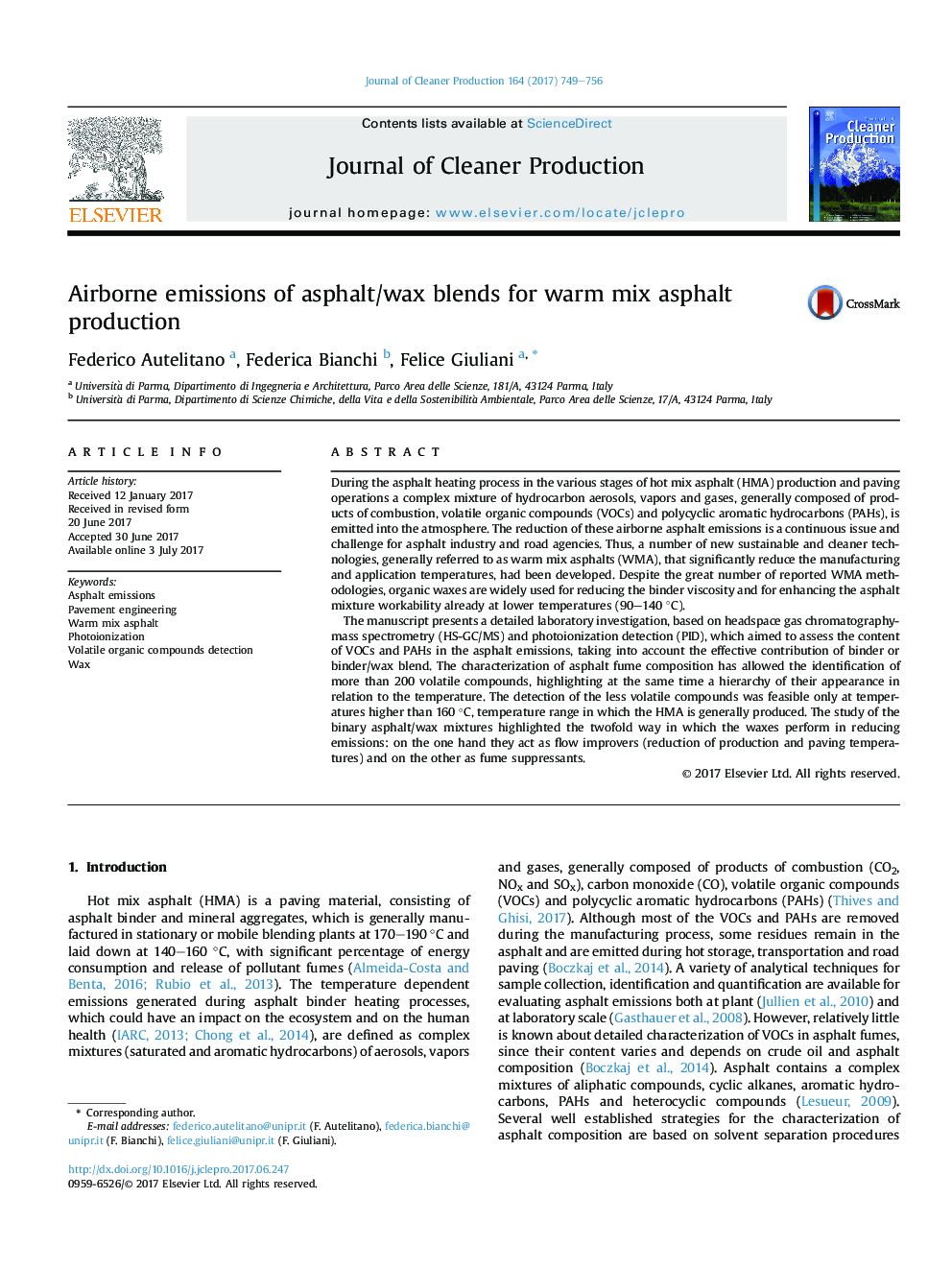| کد مقاله | کد نشریه | سال انتشار | مقاله انگلیسی | نسخه تمام متن |
|---|---|---|---|---|
| 5480486 | 1522090 | 2017 | 8 صفحه PDF | دانلود رایگان |
During the asphalt heating process in the various stages of hot mix asphalt (HMA) production and paving operations a complex mixture of hydrocarbon aerosols, vapors and gases, generally composed of products of combustion, volatile organic compounds (VOCs) and polycyclic aromatic hydrocarbons (PAHs), is emitted into the atmosphere. The reduction of these airborne asphalt emissions is a continuous issue and challenge for asphalt industry and road agencies. Thus, a number of new sustainable and cleaner technologies, generally referred to as warm mix asphalts (WMA), that significantly reduce the manufacturing and application temperatures, had been developed. Despite the great number of reported WMA methodologies, organic waxes are widely used for reducing the binder viscosity and for enhancing the asphalt mixture workability already at lower temperatures (90-140 °C).The manuscript presents a detailed laboratory investigation, based on headspace gas chromatography-mass spectrometry (HS-GC/MS) and photoionization detection (PID), which aimed to assess the content of VOCs and PAHs in the asphalt emissions, taking into account the effective contribution of binder or binder/wax blend. The characterization of asphalt fume composition has allowed the identification of more than 200 volatile compounds, highlighting at the same time a hierarchy of their appearance in relation to the temperature. The detection of the less volatile compounds was feasible only at temperatures higher than 160 °C, temperature range in which the HMA is generally produced. The study of the binary asphalt/wax mixtures highlighted the twofold way in which the waxes perform in reducing emissions: on the one hand they act as flow improvers (reduction of production and paving temperatures) and on the other as fume suppressants.
Journal: Journal of Cleaner Production - Volume 164, 15 October 2017, Pages 749-756
